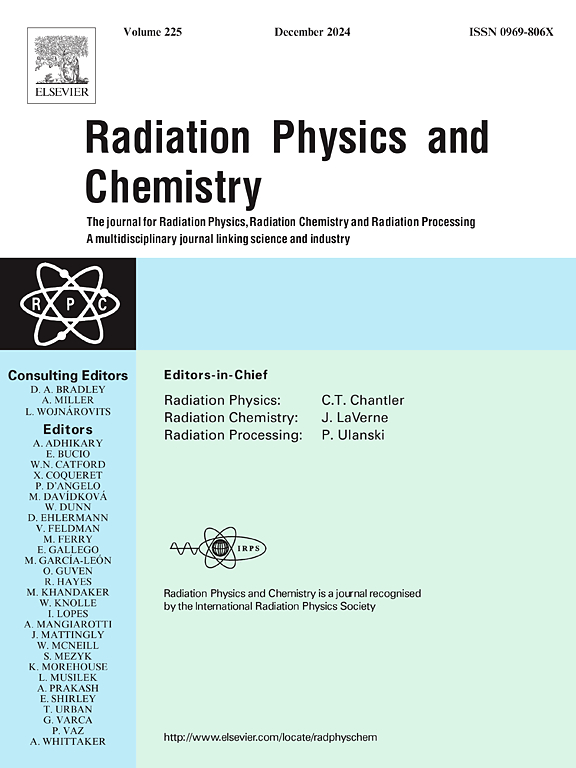Enhancing radiological risk evaluation through AI and HotSpot code integration: A Comparative study of LOCA and SGTR
IF 2.8
3区 物理与天体物理
Q3 CHEMISTRY, PHYSICAL
引用次数: 0
Abstract
This study assesses and compares the radiological risks posed by two nuclear accident scenarios: Loss of Coolant Accident (LOCA) and Steam Generator Tube Rupture (SGTR). Using consistent environmental parameters and atmospheric conditions with radionuclide concentration levels specific to each scenario, the study evaluates radionuclide deposition rates and the Total Effective Dose Equivalent (TEDE). Key factors such as soil surface roughness and distance from the incident site are considered, as they significantly influence radionuclide deposition and dose rates. For accident management within the Nuclear Power Plant (NPP), an Artificial Neural Network (ANN) model demonstrated 95.51% accuracy in fault prediction, enhancing operational reliability in emergencies. Integrating Artificial Intelligence (AI), specifically the Long Short-Term Memory (LSTM) model, with the HotSpot Health Physics Code enabled enhanced prediction of ground surface deposition dose (GSD) at distances beyond traditional limits. At a distance of 200 km, HotSpot’s dose calculation recorded GSD values of 1.6 × 10⁻³ kBq m求助全文
约1分钟内获得全文
求助全文
来源期刊

Radiation Physics and Chemistry
化学-核科学技术
CiteScore
5.60
自引率
17.20%
发文量
574
审稿时长
12 weeks
期刊介绍:
Radiation Physics and Chemistry is a multidisciplinary journal that provides a medium for publication of substantial and original papers, reviews, and short communications which focus on research and developments involving ionizing radiation in radiation physics, radiation chemistry and radiation processing.
The journal aims to publish papers with significance to an international audience, containing substantial novelty and scientific impact. The Editors reserve the rights to reject, with or without external review, papers that do not meet these criteria. This could include papers that are very similar to previous publications, only with changed target substrates, employed materials, analyzed sites and experimental methods, report results without presenting new insights and/or hypothesis testing, or do not focus on the radiation effects.
 求助内容:
求助内容: 应助结果提醒方式:
应助结果提醒方式:


